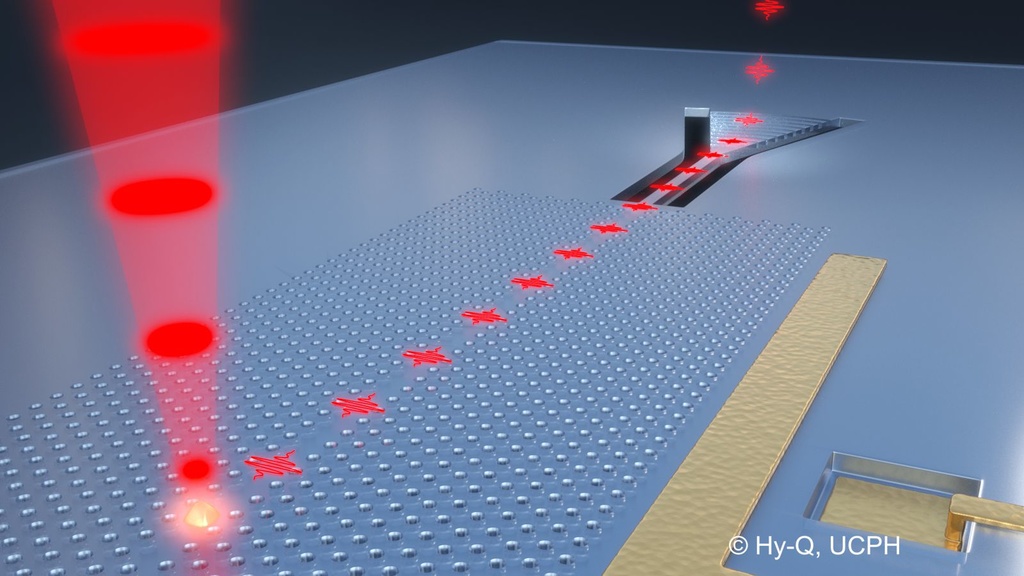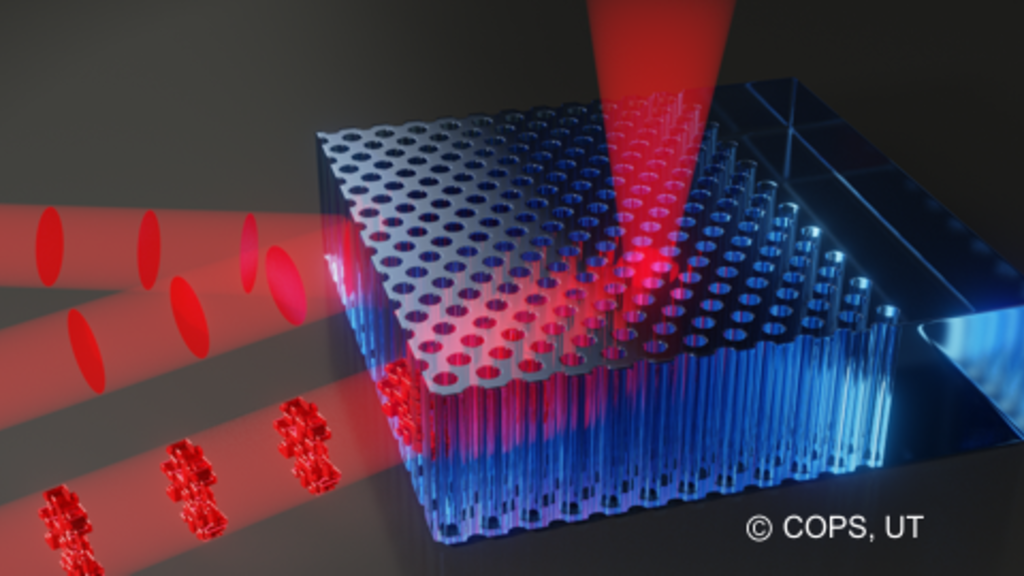
Nanophotonic emitter-photon interfaces
This research direction aims at creating deterministic interface between a quantum emitter (e.g., a semiconductor quantum dot) and light with the vision of realizing efficient single- and entangled-photon sources. To this end, we utilize designer nanophotonic structures that provide precise control over the local density of optical states (LDOS) for controlling the quantum light-matter interactions. We also optimize the semiconductor heterostructure design while epitaxially building a quantum dot to control the electronic properties of the emitter. This combination of photonic and electronic control has led to the generation of a record number of >100 identical single-photon from a single quantum dot with efficiencies that enable applications with quantum advantage*.

Multiphoton entanglement generation
Photons are the best carriers for quantum information due to the simplicity in encoding and manipulating them. A key building block in realizing practical quantum technologies is an efficient and high-fidelity entangled photon source. While the quintessential example of an entangled state is a Bell pair, but the generation of multiphoton entangled states such as GHZ states and cluster states are essential for quantum networks, one-way quantum computing, and quantum simulation. In this project we develop this building block using semiconductor quantum dots.
This project is accelerated through the recently awarded Jumpstarting Tomorrow Seed Grant from OVPR in a quest to build an interdisciplinary team of researchers across Basic Sciences and Engineering for tackling the grand challenge of building a Quantum Simulator.
RU, Leonardo Midolo, Xiaoyan Zhou, Jacques Carolan, Peter Lodahl, Nat. Nanotechnol. In Press (2021) [arXiv]

Adaptive control of light
While the conventional approach for controlling light transport is by fabricating high-quality nanophotonic devices(e.g., photonic crystals, waveguides, cavities), scalable reconfigurability of light transport using such devices once fabricated poses severe challenges. In this project, we work towards integrating nanophotonic devices with wavefront shaping techniques. Reconfigurability is realized with the help of a spatial light modulator (SLM) that can precisely craft the wavefront of the light (classical as well as quantum) injected into a complex photonic device or an integrated circuit. This technique allows us to control many optical modes simultaneously, thereby leading to new opportunities in multimode quantum optics. A couple of examples include:
a) Shaping light to illuminate the dark heart of a photonic bandgap crystal. This will allow us to create nanophotonic cavities for creating quantum devices (e.g., single-photon switches, nonlinear gates) and address them optically.
Phys. Rev. Lett. 126, 177402 (2021)
b) Controlling multimode two-photon correlations and asymmetric quantum-secure communication schemes.



